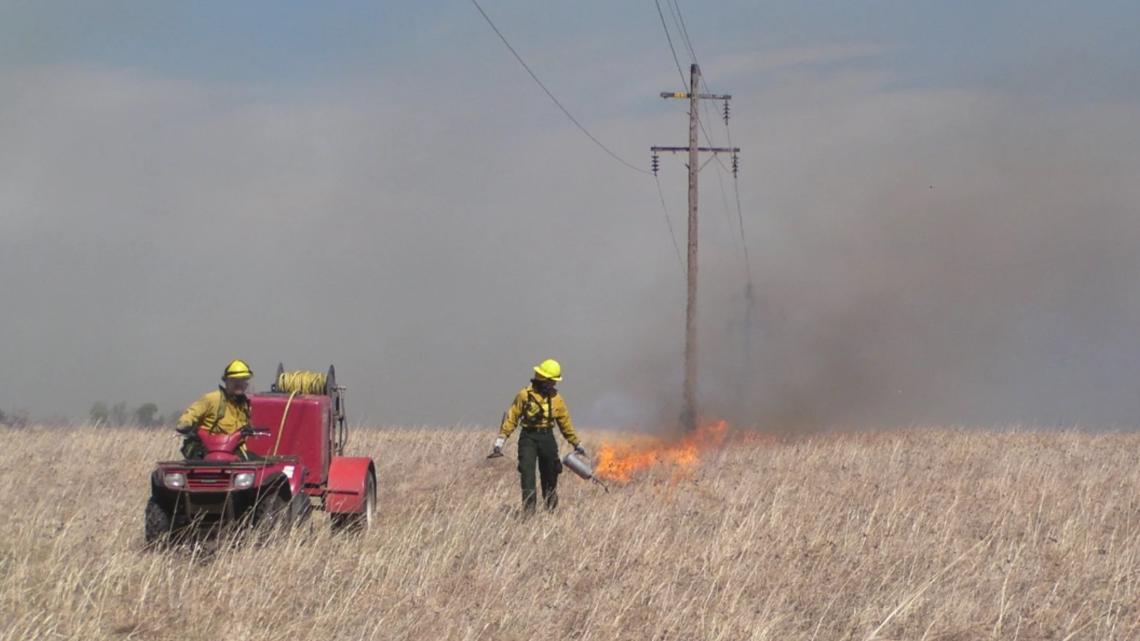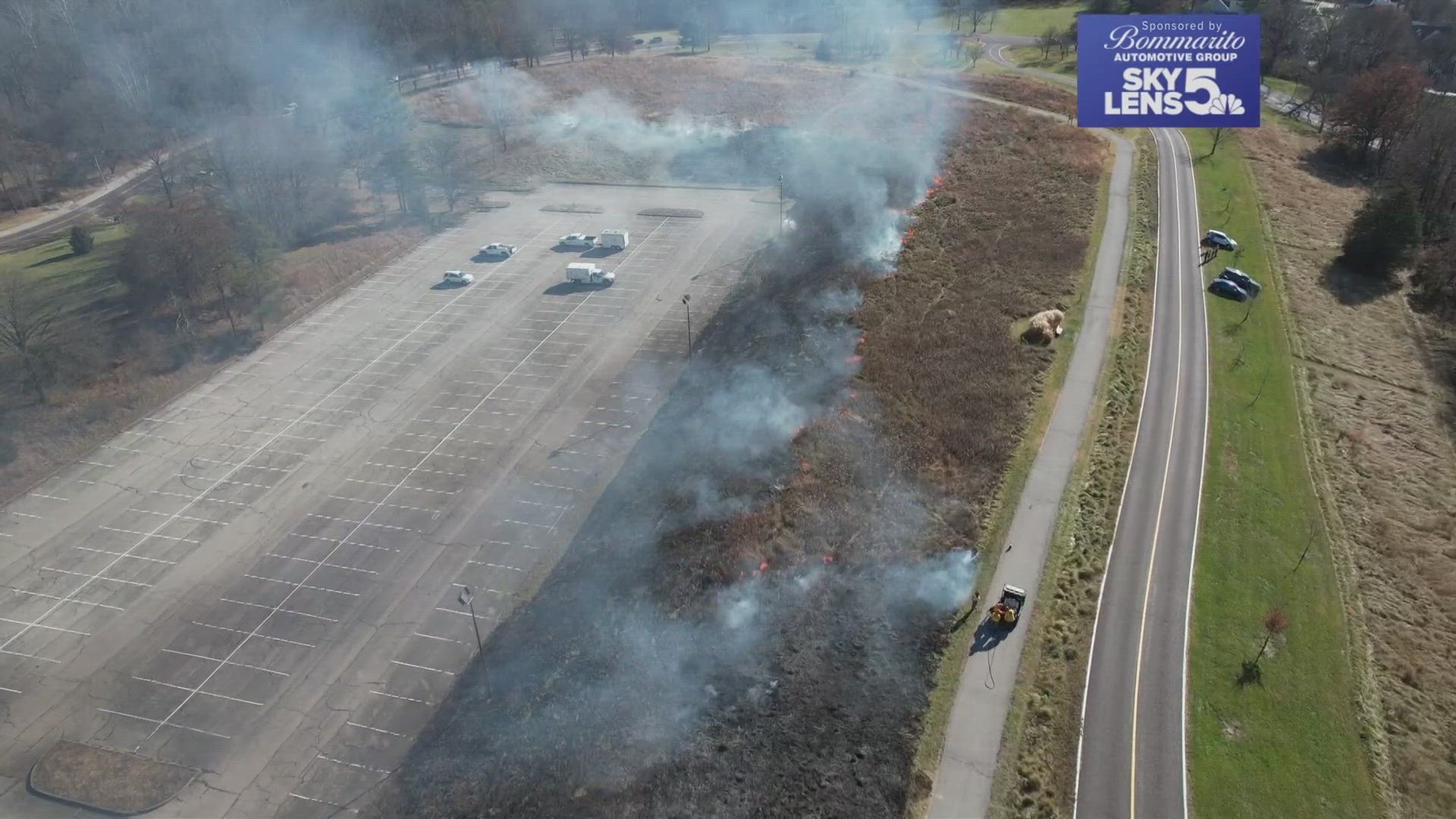MISSOURI, USA — Father Louis Vivier encountered a world on fire when he first stepped foot in the Midwest.
The French Jesuit was one of the first Europeans to describe Missouri's landscape. His 1750 written account had an unfavorable tone regarding the people setting the fires: Missouri's original Native American tribes.
"The trees are almost as thinly scattered as in our public promenades ... partly due to the fact that the Savages set fire to the prairies toward the end of the autumn, when the grass is dry; the fire spreads everywhere and destroys most of the young trees," a letter written by Vivier said.
Vivier was right about fire being a frequent occurrence in Missouri. Recent University of Illinois research found the Midwest's tribes had been purposefully setting fires in grasslands and prairies for centuries. But, whether clouded by ignorance or xenophobia, Vivier wasn't interested in learning why tribes set fires.
Missouri's indigenous people knew the essential role fire played in the state's ecosystem. That knowledge, and the practice of managed burns, is being rekindled by the Missouri Prescribed Fire Council, a coalition of landowners and experts attempting to bring the state's grasslands back to their once-thriving status.


Why Missouri needs fire
Numerous tribes' have a generations-old tradition of "cultural burning," or the intentional igniting of smaller, controlled fires to promote the health of vegetation, livestock and wildlife. The practice has been recorded nationwide and links back to the tribal philosophy of fire as medicine, according to the National Park Service.
European colonists' response to the tradition of cultural burning was the implementation of a century-long fire suppression regime. Missouri's continually disappearing prairies also have the lack of fire to blame. Unregulated tree growth, known as "woody plant encroachment," has progressed throughout the Midwest as saplings haven't been burned by fires.
Missouri's Ozark region, for instance, has existed in the "not enough fire" category for much of recent history, causing a drop in biodiversity and the domination of the landscape by oak, hickory and cedar trees, according to the University of Washington.
The Missouri Prescribed Fire Council is trying to reverse that fire suppression regime and reintroduce managed burns back into the state for the health of its natural environment.
"Almost all of (Missouri's) natural plant communities have adapted with fire," said Wes Buchheit, councilmember and prescribed fire coordinator biologist with Pheasants Forever & Quail Forever. "Fire is a natural tool and prescribed fire is mimicking that natural process in a more controlled setting … you can benefit a lot of different species, plant and animal, with prescribed fire."
Council Vice Chair and Nature Conservancy Steward Manager Ryan Gauger said all of Missouri is fire-adapted in some way, and the council is working to develop a fire-needs assessment for the state to learn specifics this summer.
Private landowners must drive Missouri's return to fire
About 93% of Missouri's 44.6 million acres of land is privately owned, according to the Missouri Department of Conservation. The lack of publicly owned land means any substantive prescribed burning must come through community collaboration.
Fire has gained a negative reputation throughout most of the nation since 2020, when California's record-breaking wildfire year was televised for months. The following years have also seen numerous devastating wildfires in Hawaii, Texas, Louisiana and across Canada.
One of the causes of those catastrophic wildfires, however, can be linked back to a lack of prescribed fires. The last century's suppression of fire across the nation led to the build-up of fuels on forest floors, leading any drifting ember to cascade into a raging blaze.
In response to multiple recent historic wildfire seasons, a movement of Prescribed Burn Associations (PBAs) has grown nationwide. Many prescribed burn efforts are led by federal agencies, but PBAs are a collaboration between landowners.
The Missouri Prescribed Fire Council is part of that growing movement. Because wildfires haven't been a prevalent issue for Missourians, private landowners in the state haven't been as hesitant to participate in prescribed burning as other wildfire-prone states.
Prescribed fires have burned tens of thousands of acres in 95 of the state's 114 counties between 2020 and 2022, council data showed. Of those, just over 1% have "escaped" from official controls, and the vast majority of escaped fires have burned only 0.1 acres or less, on par with national averages.
"The only time that folks ever heard about prescribed fire is when there's an 'oops,' they don't hear about the other almost 99% of the time that things go perfectly well," Council Chair Mark Howell said. "There's no issues or very minimal issues, and we just achieve good results on the landscape."


Want to help start prescribed fires in Missouri?
There are 14 PBAs in Missouri alone, a list of which can be found on the Missouri Prescribed Fire Council's website.
If there isn't a PBA near the area for those interested in joining one, the council has resources to help create a PBA. Click here to learn more.
The Upper Meramec and Greater Maries PBAs are holding a meet-and-greet in Rolla on May 18 for anyone interested in learning more about prescribed burning.
Top St. Louis headlines
Get the latest news and details throughout the St. Louis area from 5 On Your Side broadcasts here.

